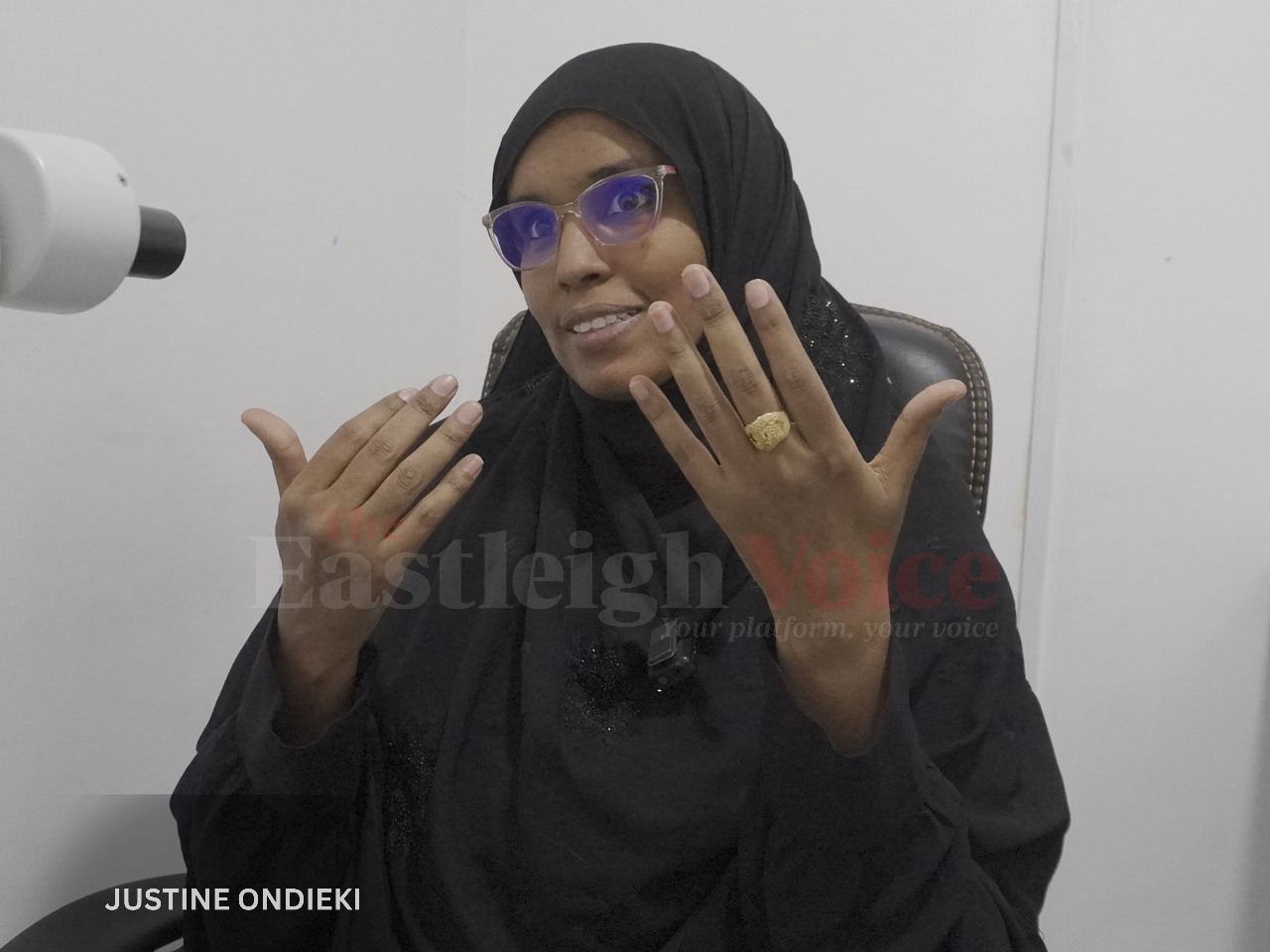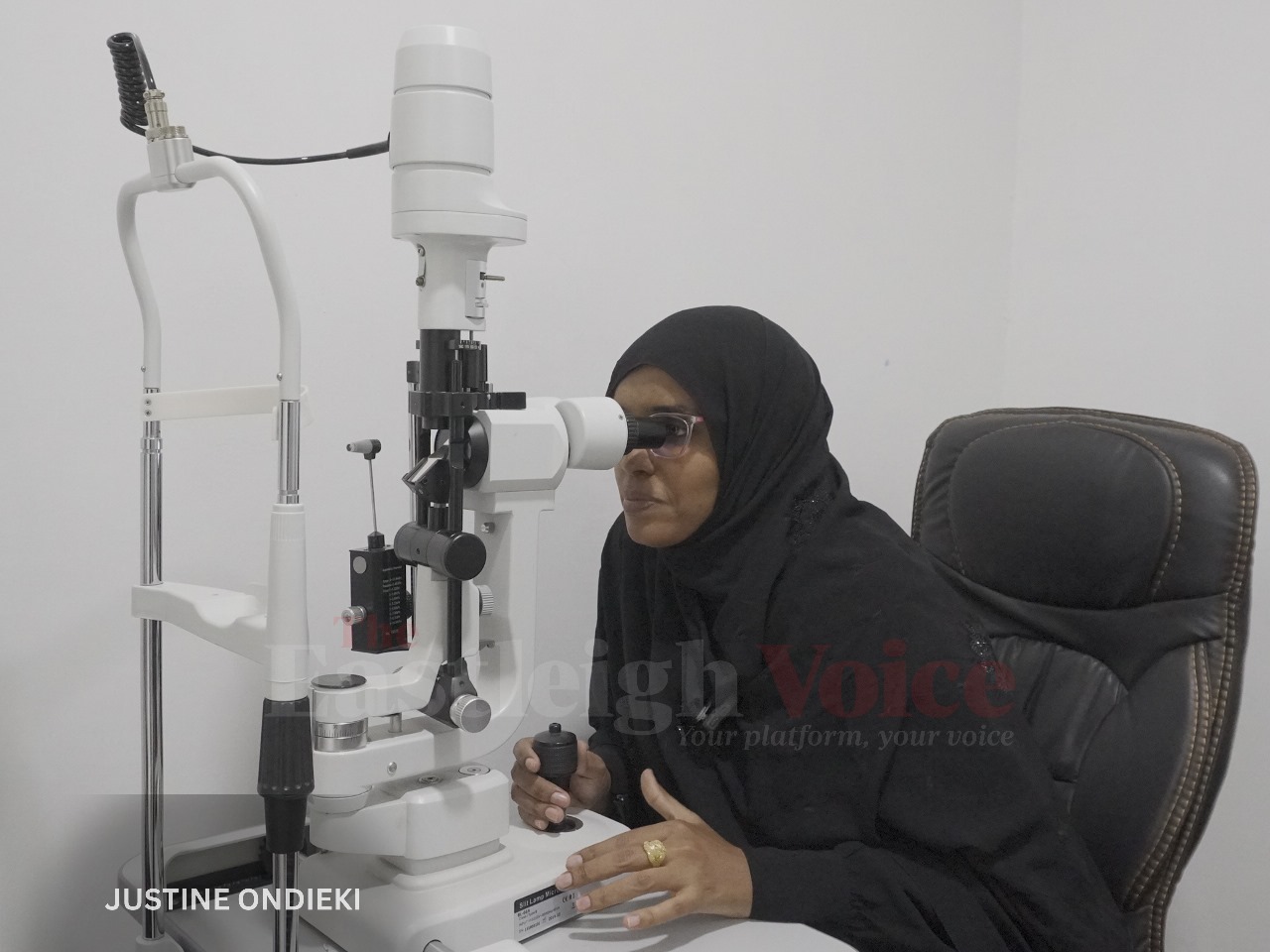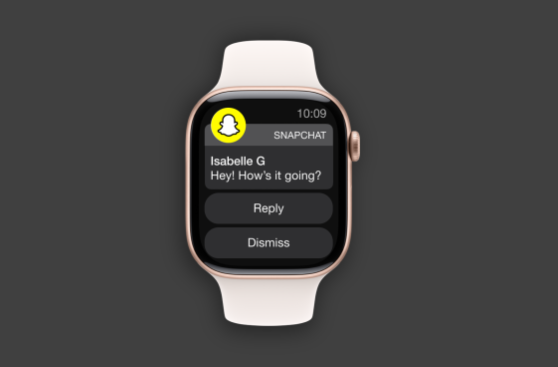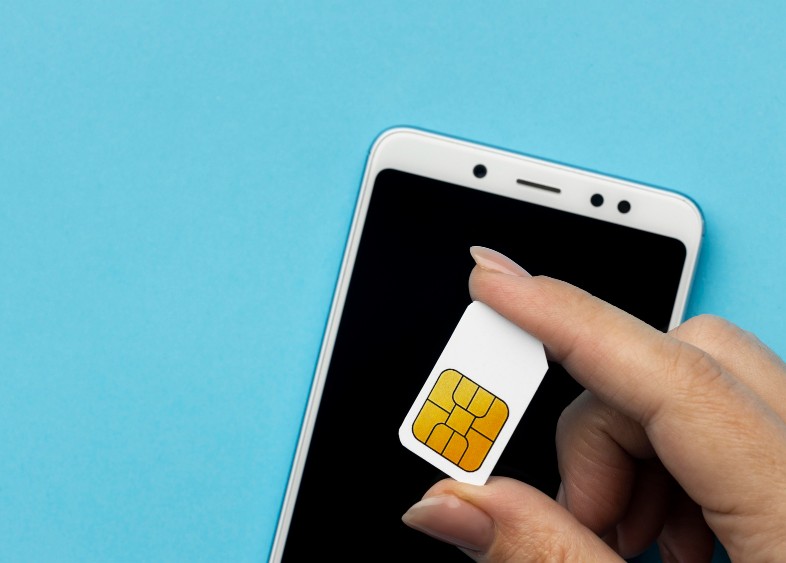Digital eye strain: A growing public health concern
According to Kenya's Ministry of Health, approximately 7.5 million Kenyans need eye care services, with cataracts, refractive errors, and allergies being the main contributors to eye diseases.
Every morning, Cheles Ouma wakes up feeling like he never really slept. His eyes are red and watery, his body drained, and a dull heaviness clings to him long after he's out of bed. It has become his new normal—the quiet cost of long nights spent under the glow of screens.
For Ouma, screens are woven into every part of his life. They’re his workplace, his window to the world, and his escape when boredom sets in. But the trade-off is undeniable. Between the steady hum of his laptop and the pull of his phone, he’s lost the rhythm of real rest. Sleep deprivation and eye strain have settled into his routine like unwelcome guests, but he keeps pushing through.
More To Read
- Investing in eye care could boost economy by Sh33 billion - report
- The right way to clean and care for your lenses
- Ozempic and other weight-loss drugs linked to rare but serious eye conditions
- Report shows 86,000 Kenyan children struggle with poor vision
- 450 cataract patients receive free eye surgery in Garissa
- Children in Taita Taveta County to undergo free eye screening
"My phone is the first thing I touch in the morning," he says. "It’s like my closest companion. I use it to set my alarm, check my to-do list, and stay updated. Everything I do revolves around it."
As an IT professional, Ouma’s world is entirely digital. From the screen at work to the one he unwinds with at home, there’s rarely a moment when his eyes aren’t fixed on some form of technology.
"Like many people, I end up going to bed late," he adds. "After staring at a screen all day, my mind doesn't switch off. Even when I try to relax, I reach for my phone or laptop to watch something or scroll—it’s become my default escape. My job is demanding, and screens are both my work and my way of unwinding."
But it’s the lack of quality sleep that worries him most. Each morning, he wakes up exhausted, struggling to stay alert. His eyes are sore, his focus unsteady, and fatigue follows him through the day.
In a bid for relief, Ouma took matters into his own hands—literally.
“I just walked into a shop and asked for glasses that block excess light,” he says. “They cost me about Sh800. I didn’t get my eyes tested because I thought the check-up would be too expensive.”
Ouma's approach is far from uncommon. Many people assume the answer to tired, strained eyes lies in a quick fix like blue-light glasses—often overlooking the real culprit: prolonged screen exposure. Rather than taking breaks or limiting screen time, many opt for self-prescribed solutions, while others simply don’t know where to begin.
Across the country, an increasing number of people are turning to over-the-counter eyewear and remedies without ever undergoing an eye exam. While convenient, this growing trend is causing concern among eye specialists, who warn that these shortcuts could be masking deeper problems and, in some cases, making them worse.
Public health issue
Digital eye complications are fast emerging as a major public health issue. More adults—and now children—are experiencing vision challenges such as nearsightedness (myopia) due to excessive screen exposure. With screens dominating every part of modern life—learning, work, entertainment—the strain on our eyes is becoming increasingly visible.
Dr. Fauzia Muhammed, an ophthalmologist and cataract surgeon at Health Gate Hospital in Eastleigh, Nairobi, says nearly 80% of her patients now wear spectacles due to deteriorating vision, often caused by digital eye strain.
 Dr. Fauzia Muhammed, an ophthalmologist and cataract surgeon at Health Gate Hospital in Eastleigh, Nairobi. (Photo: Justine Ondieki)
Dr. Fauzia Muhammed, an ophthalmologist and cataract surgeon at Health Gate Hospital in Eastleigh, Nairobi. (Photo: Justine Ondieki)
"People spend hours on their phones and computers, often without proper screen habits," she explains. "In an attempt to ease discomfort, many turn to self-medication—but that can be dangerous. Using over-the-counter remedies without a proper eye exam can do more harm than good."
Other Topics To Read
One of the most frequent issues she sees is digital eye strain—also known as computer vision syndrome. If ignored, it can lead to the development or worsening of refractive errors like myopia, hyperopia, or astigmatism.
“Even toddlers, as young as one, are constantly glued to screens,” Dr. Fauzia notes. “This continuous exposure causes eye dryness and fatigue. When we focus on screens, we blink less, which means the tear film isn’t evenly spread across the eye’s surface, leading to discomfort.”
She further explains that this lack of blinking, combined with intense eye use, can gradually alter the eye’s curvature, setting the stage for long-term complications.
To mitigate this, Dr. Fauzia recommends adopting the 20-20-20 rule: Every 20 minutes, take a 20-second break and look at something 20 feet away. It’s a simple yet powerful technique to help the eyes relax.
Additional strategies include using anti-glare screens and protective eyewear, maintaining good posture, and eating a balanced diet rich in leafy greens and zinc—all of which support eye health. But most importantly, she emphasizes the need for regular screen breaks.
Another rising concern is the culture of self-diagnosis—driven by misinformation and accessibility to non-prescription solutions.
“Eyes are incredibly delicate. Damage, once done, is often irreversible,” Dr. Fauzia cautions. “Many people use non-prescribed medications, including steroid eye drops, without understanding the consequences. This can lead to serious conditions like glaucoma or cataracts.”
Among teenagers, she’s also noticed a troubling trend: some exaggerate or fabricate symptoms during eye exams—possibly seeking attention or out of misinformation. This can lead to incorrect prescriptions, ultimately worsening their vision.
“As doctors, we’re trained to spot inconsistencies,” she says. “But honesty during eye exams is crucial. It ensures we offer the right diagnosis and treatment.”
 Dr Fauzia Mohammed checking the eye equipment before examining a patient at Health Gate Hospital in Eastleigh, Nairobi. (Photo: Justine Ondieki)
Dr Fauzia Mohammed checking the eye equipment before examining a patient at Health Gate Hospital in Eastleigh, Nairobi. (Photo: Justine Ondieki)
Dr. Fauzia also links the rise in eye complications to underlying conditions like diabetes, which is prevalent in Eastleigh. Diabetes can lead to diabetic retinopathy, a condition where high blood sugar damages the retina’s blood vessels. Left untreated, it can cause permanent blindness.
“People living with diabetes should get their eyes examined at least once a year,” she stresses. “Early detection is the key to preventing severe complications.”
Refractive errors
Refractive errors are among the most common causes of poor vision. These include:
Myopia (nearsightedness) – difficulty seeing distant objects
Hyperopia (farsightedness) – difficulty focusing on nearby objects
Astigmatism – blurred vision caused by an irregular eye curvature
Presbyopia – age-related loss of near focusing ability
“Reduced vision happens when light fails to focus correctly on the retina, often due to changes in the eye’s shape,” Dr. Fauzia explains. “These issues may be hereditary, or they can develop due to premature birth, chromosomal disorders like Down syndrome or autism, or prolonged screen use.”
Other contributing factors include glaucoma, cataracts, and even eye allergies that cause frequent itching—potentially leading to structural changes in the eye.
“Treatment always depends on a proper diagnosis,” she notes. “After a thorough eye exam, we may recommend glasses, laser therapy, or in advanced cases, refractive or corneal transplant surgeries.”
While glaucoma causes permanent damage to the optic nerve, timely medication or surgery can slow its progression. Cataracts, often associated with aging, can also affect children—whether due to genetics or trauma.
“Some children are born with cataracts, while others develop them early in life. Surgery is the only solution, and early intervention is vital,” Dr. Fauzia says. “Even for adults, timely surgery improves outcomes significantly.”
A large study known as the PHC-NEXT Study explored how screen time affects eye health. The research involved over 102,000 adults and found a clear link between the amount of time spent on digital screens and the risk of developing dry eye disease.
The findings showed that for every additional hour spent on screens daily, the risk of being clinically diagnosed with dry eye disease (DED) increased by 18 percent. The chances of experiencing severe dry eye symptoms also went up—by 11 percent in men and 12 percent in women.
This happens because staring at screens for long periods causes people to blink less, which reduces the spread of tears across the eyes. Without enough moisture, the eyes become dry, irritated, and tired. Over time, this can lead to serious discomfort and even affect vision.
Another study conducted in Korea examined the eye health of 916 children and focused on how smartphone usage affected their eyes. The research found a striking connection between screen time and dry eyes in children. It showed that almost all the children who reported experiencing dry eye symptoms spent over three hours a day on smartphones.
In contrast, children who didn’t have dry eyes spent significantly less time—less than an hour—using their smartphones daily. This suggests that excessive screen time, especially on smartphones, is a major factor contributing to dry eye issues in children.
Smartphones, like other digital screens, cause children to blink less frequently. When we blink less, tears don’t spread evenly across the eyes, which can result in dryness, irritation, and discomfort. Over time, these symptoms can worsen, leading to more serious eye issues.
This study highlights how young people, even as early as childhood, are not immune to the effects of long screen hours, particularly smartphones. Given the increasing use of screens in education, entertainment, and communication, both children and parents need to be aware of the potential harm. Regular breaks, limiting screen time, and practicing good eye care can help protect children from the long-term consequences of excessive smartphone use.
According to Kenya's Ministry of Health, approximately 7.5 million Kenyans need eye care services, with cataracts, refractive errors, and allergies being the main contributors to eye diseases. However, only about 21% of them have access to these services. On a global scale, the World Health Organization (WHO) reports that at least 2.2 billion people suffer from vision impairment, either near or distance-related. Among them, 1 billion individuals have vision problems that could have been prevented or are still untreated. The primary causes of vision impairment and blindness worldwide, as identified by the WHO, are refractive errors and cataracts.
Top Stories Today















































